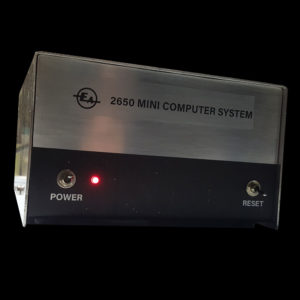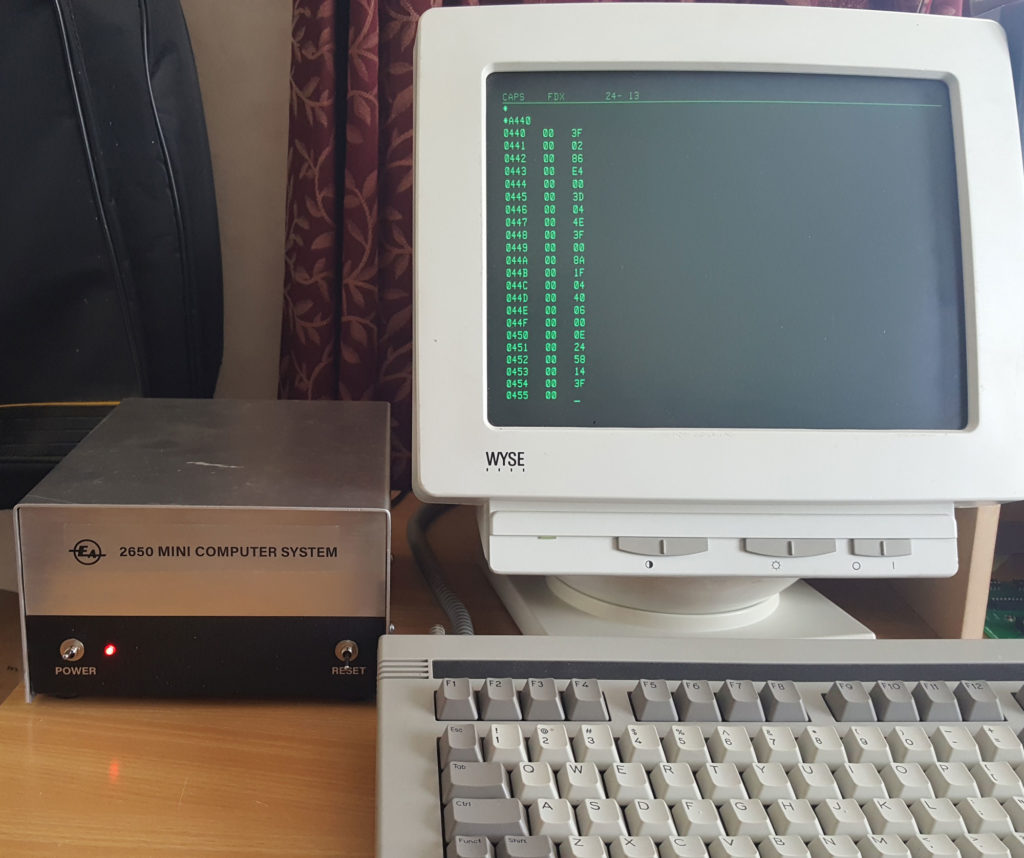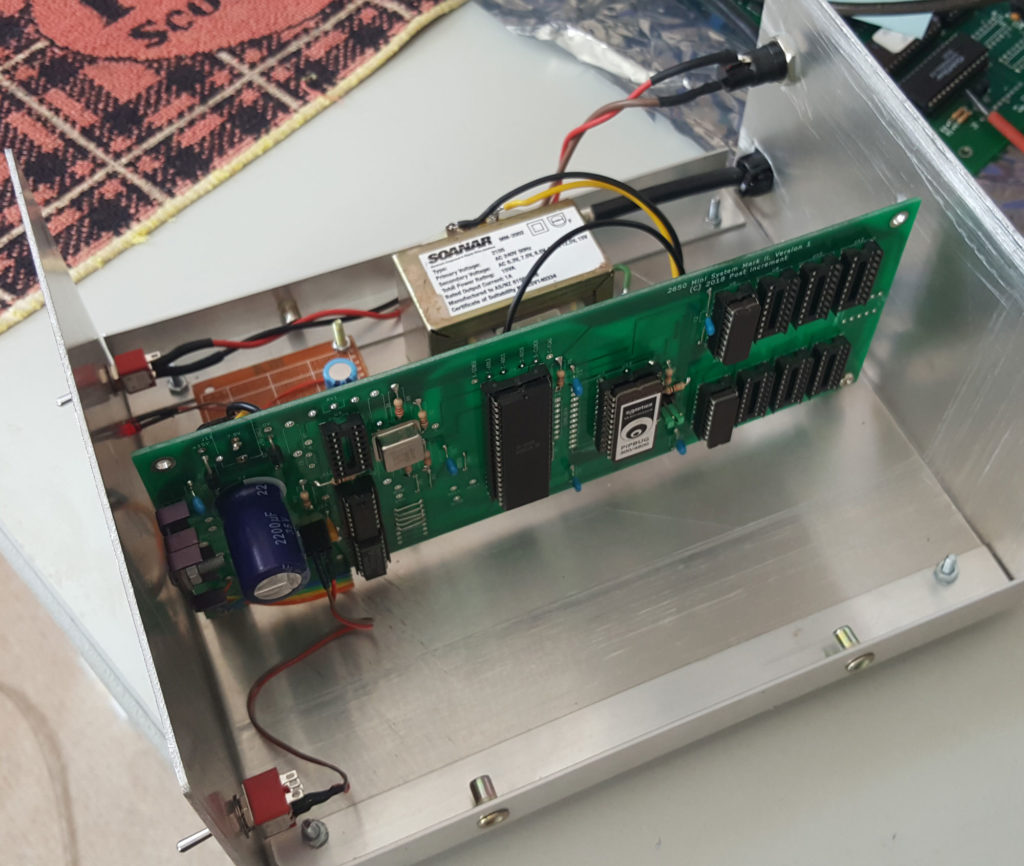
2650 Mini Computer
Posted by musovern on Feb 15th, 2020 in 2650-mini-computer, Vintage Computers | 0 comments
A remake of the EA 2650 mini system
In May 1978, Electronics Australia described a small development board based on the Signetics 2650 microprocessor. For many people in Australia (the author included), this was the first computer that was cheap enough to buy and build even if you were a student or beginner.
This update to the simple and elegant design of the original provides a new PCB that evokes the original while adding modern alternatives to some of the hard-to-get parts of the original.
The original article text is included at the end of this document
The new board has three options over the original.
• A crystal oscillator instead of the original monostable circuit.
• A 2716 or 2732 EEPROM instead of the hard to get PIPBUG mask programmed device
• An external 5V DC supply instead of a centre-tapped transformer
• A TTL serial interface instead of 20mA current loop
A short description of the PipBug system
The debug/monitor program, code by DAVID EDWARDS named “Pipbug”, is resident in a 2608 ROM. Pipbug recognizes seven basic commands, each of which consists of an alphabetic character, any required numerical parameters, and a terminating return.
The parameters are given as hexadecimal characters, with leading zeros unnecessary.
The seven commands and their functions are as follows:
A — See and alter memory;
B — Set breakpoint (2 permitted);
C — Clear breakpoint;
D — Dump memory to tape;
G — Go to address, run;
L —Load memory from tape;
S — See and alter registers.
Only two of a maximum of eight RAM
chips are shown in the circuit diagram
at right. The rest are wired similarly.



Leave a Reply